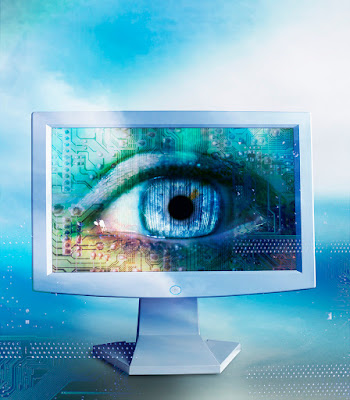What is computer vision syndrome and how to protect your eyes from this disease?
The use of smartphones and computers is increasing in our lives. On the one hand, the working people have to sit in front of the computer screen for hours in the office, on the other hand, students have to take the help of the internet in education.
Everyone, from children to old people, has started resorting to smartphones or laptops for free time. But focusing on the screen for too long causes excessive pressure on our eyes. This problem is now taking the form of computer vision syndrome which is itself a group of eye problems. Let's know what is computer vision syndrome and how to protect your eyes from it.
What is computer vision syndrome and how does it happen?
Let us first know what is computer vision syndrome (CVS). Computer vision syndrome, also known as digital eye strain, is a term of eye and vision problems that occurs as a result of long-term use of computers, tablets, e-readers, and smartphones, etc.
It is not a specific problem, but a group of problems related to eye strain and pain. Research shows that at present 50-90 percent of the people working on computer screens are having this problem. People who work on the computer for three hours or more are at greater risk.
This problem is not limited to working people, but small children are also vulnerable. This problem is further aggravated when a computer or smartphone is used in a low light location. Due to the increasing use of digital screens by people, this problem is becoming more dangerous.
Symptoms of computer vision syndrome
Symptoms associated with computer vision syndrome (CVS) or digital eye strain are common:
- Eyestrain
- Headache
- Blurred vision
- Dry eye
- Neck, back and shoulder pain
- Difficulty changing focus repeatedly between near and far
- Burning eyes and fatigue of eyes
- Contact lens discomfort
Factors of computer vision syndrome
The main reasons for having computer vision syndrome are:
- Difficulty in eye coordination in working closely
- Not sitting at a reasonable distance in front of a computer screen
- Stress on eye muscles due to functioning
- Less eyelashes and tears not forming properly
- Screen glare effect
- Extreme stress
- Not making enough use of vitamin A and other nutritious foods. Working on-screen in low light
The effect of Digital Eye Strain on the eyes depends on how much time is spent on looking at the digital screen. The longer this time, the greater this problem will be.
Problems and symptoms caused by digital eye strains are only temporary in most cases and end on their own after stopping computer work or the use of digital devices. But some people may experience this problem even after discontinuing the use of the digital screen and they may have problems like blurred vision or headache. In such a situation, they should consult a doctor immediately.
How to treat and prevent computer vision syndrome
The first way to prevent digital eye strain is to identify the conditions and causes that are causing the problem of computer vision syndrome. The sooner this condition can be detected, the easier the problem of digital eye strain can be avoided. Delay in recognition of this problem means that its symptoms will deepen and there will be more difficult in treatment.
- To remedy and prevent this problem, note the following:
- Use anti-glare glasses on the computer screen
- Keep computer screen 15-20 degrees below eye level
- Do not watch more on digital screens for entertainment
- Work in the right position
- Follow the 20-20-20 rule; At least 20 seconds to see something 20 feet away after every 20 minutes
- Take a break off
- Let the eyes rest for at least 15 minutes after looking at the screen for two hours continuously
- Try to blink the eyes repeatedly. Blink of an eye keeps your eye surface moist
- Keep the screen of the computer 20-25 inches away from the face. This is considered the most appropriate distance.
- This problem can be relieved by adopting correct eye habits and regular screen viewing habits.
- If the vision starts becoming blurred and irritation or tension in the eyes, then consult a doctor.
Read this also: Obesity: How does it decrease





0 Comments